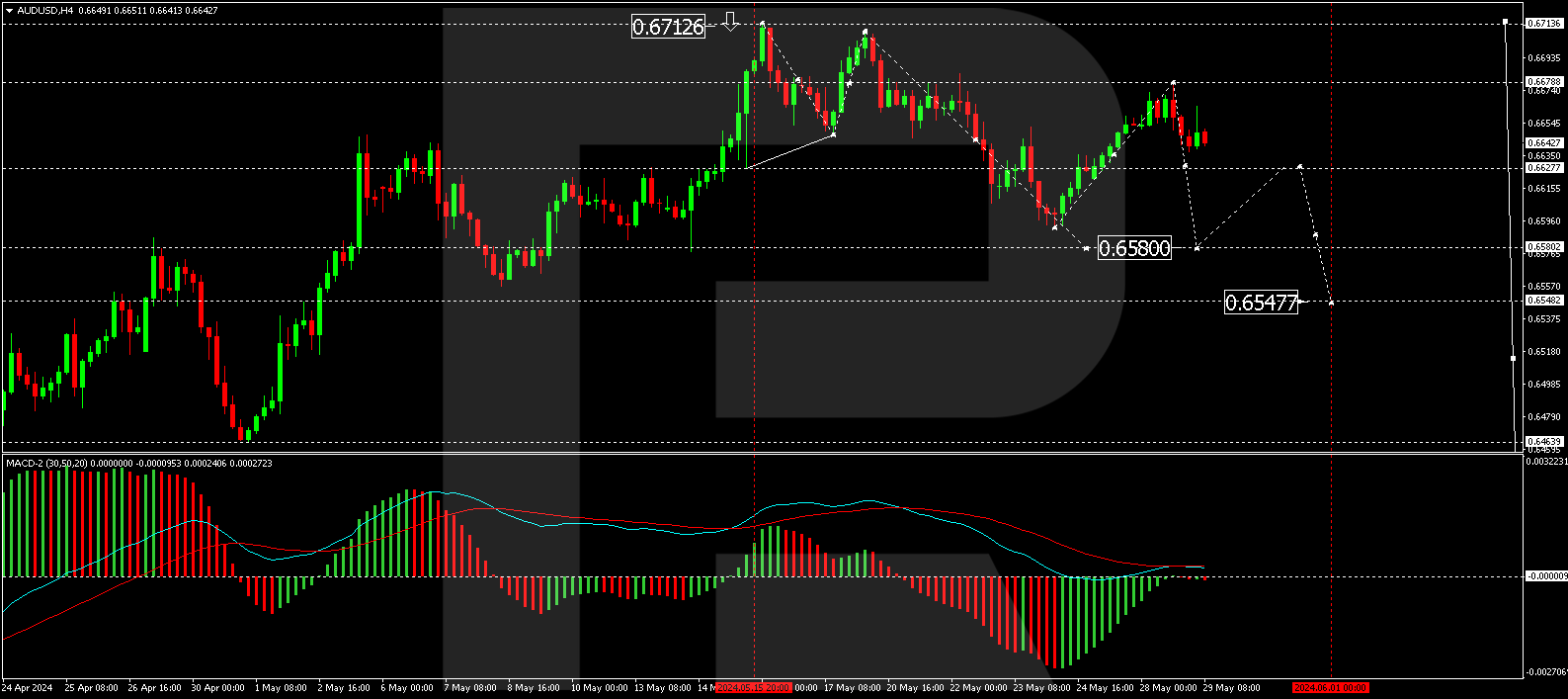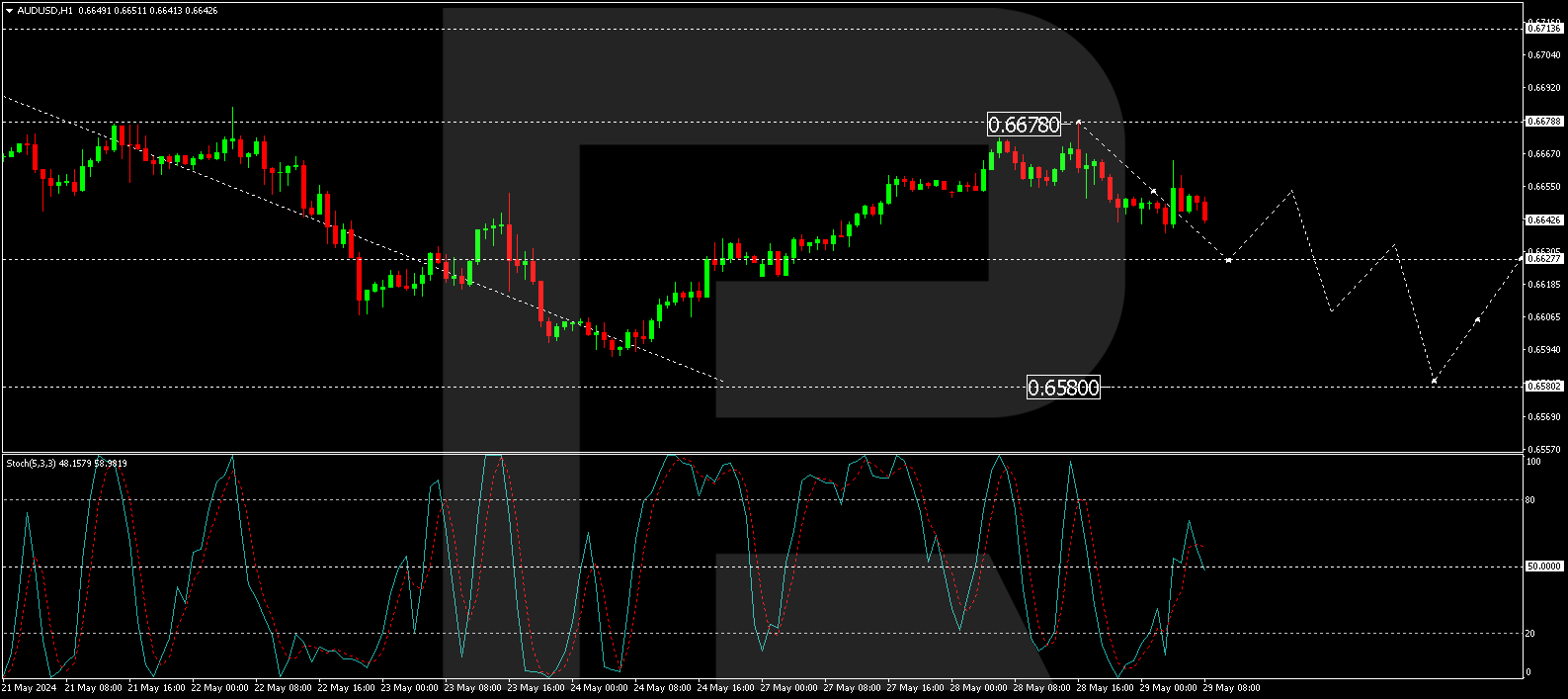By RoboForex Analytical Department
The AUD/USD pair rose to 0.6650 on Wednesday following the release of Australian economic data. Australia’s consumer price index (CPI) accelerated to 3.6% year-on-year in April, up from 3.5% in March. This slight increase in inflation could prompt questions about the Reserve Bank of Australia’s (RBA) future interest rate decisions.
Despite the uptick in inflation, it is unlikely to impact the RBA’s interest rate plans significantly. According to official forecasts, the RBA does not anticipate cutting rates before May of next year. The minutes from the latest RBA meeting indicated that while the Board was considering the possibility of a rate hike in May, it ultimately decided to maintain a stable monetary policy.
The RBA has expressed concerns that recent statistical data might sustain inflation above the target level for an extended period. However, the central bank’s current stance is to wait and see, suggesting that no immediate changes to its policy are planned in response to the latest inflation figures.
Moreover, recent retail sales data showed a marginal improvement of 0.1% month-on-month in April from a decline of 0.4% in March. Despite this positive change, the figures fell short of the anticipated 0.3% increase, disappointing the economic outlook.
Technical analysis of AUD/USD
Free Reports:
 Get our Weekly Commitment of Traders Reports - See where the biggest traders (Hedge Funds and Commercial Hedgers) are positioned in the futures markets on a weekly basis.
Get our Weekly Commitment of Traders Reports - See where the biggest traders (Hedge Funds and Commercial Hedgers) are positioned in the futures markets on a weekly basis.
 Download Our Metatrader 4 Indicators – Put Our Free MetaTrader 4 Custom Indicators on your charts when you join our Weekly Newsletter
Download Our Metatrader 4 Indicators – Put Our Free MetaTrader 4 Custom Indicators on your charts when you join our Weekly Newsletter
On the H4 chart, the AUD/USD has completed a correction and is forming a new wave of decline towards the level of 0.6620. The formation of a consolidation range is expected once this level is reached. A downward exit from this range could lead to a further decline to 0.6580, the local target. A corrective move to 0.6626 (testing from below) may follow, then a decline to 0.6547. The downward trend target is the first one. The bearish indicator technically supports this MACD scenario, with its signal line above zero but directed downwards.
On the H1 chart, the AUD/USD is forming a decline structure to 0.6627. After reaching this level, a potential rise to 0.6650 could occur. Further decline to 0.6620 is also possible, and a breakdown below this level could open the potential for a decline to 0.6608, with the possibility of extending the trend to 0.6580. This scenario is technically confirmed by the Stochastic oscillator, with its signal line currently above 50 but expected to drop to 20, indicating a possible continuation of the downward trend.
Summary
Despite mixed economic indicators, the rise of the Australian dollar highlights the complex dynamics affecting the currency. The RBA’s cautious stance appears to be a significant factor in stabilising the AUD, even as inflation slightly increases. Technical analyses suggest a bearish short-term outlook, with the possibility of corrective movements. It is crucial for investors and traders to closely monitor these levels and stay abreast of global economic developments so they can adjust their strategies accordingly.
Disclaimer
Any forecasts contained herein are based on the author’s particular opinion. This analysis may not be treated as trading advice. RoboForex bears no responsibility for trading results based on trading recommendations and reviews contained herein.

- Bitcoin price is approaching 100,000. Natural gas prices rise due to declining inventories and cold weather Nov 22, 2024
- USD/JPY Awaits Potential Stimulus Impact Nov 22, 2024
- RBNZ may cut the rate by 0.75% next week. NVDA report did not meet investors’ expectations Nov 21, 2024
- NZD/USD Under Pressure Amidst USD Strength Nov 21, 2024
- USDJPY bulls venture into intervention zone Nov 20, 2024
- The PBoC kept interest rates. The escalating war between Ukraine and Russia is negatively affecting investor sentiment Nov 20, 2024
- AUD/USD Consolidates After Recent Gains Nov 20, 2024
- The RBA will maintain a restrictive monetary policy until the end of the year. Nov 19, 2024
- Safe-haven assets rally on nuclear concerns Nov 19, 2024
- Gold Rebounds Amid USD Weakness and Geopolitical Uncertainties Nov 19, 2024


